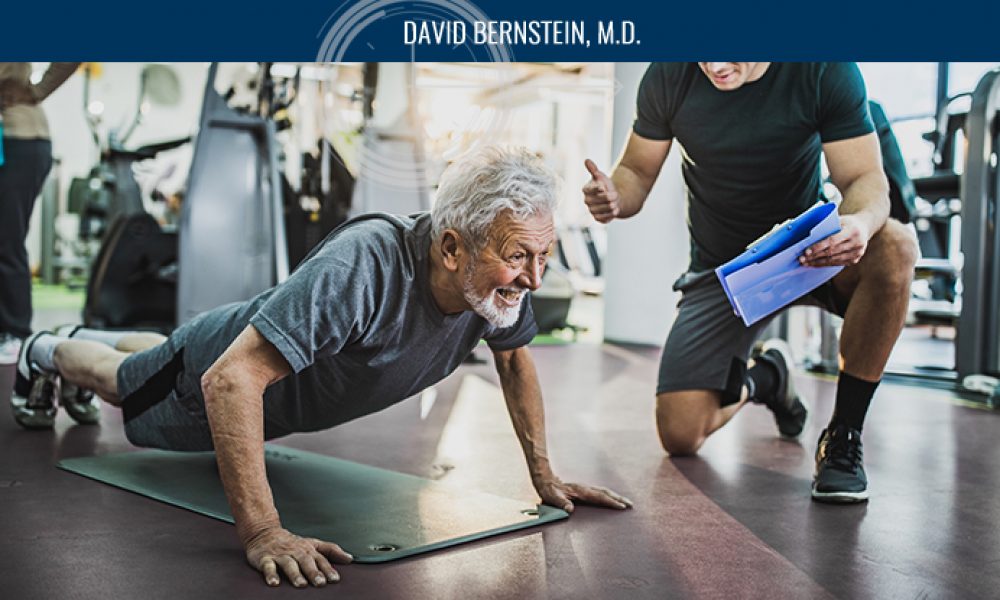As the new year has arrived, I wanted to discuss an aspect of sweat to kick it off. First, I want to give a shout out to my incredible office staff without whom I could not provide the kind of care to my patients that they deserve. I am very proud of and thankful for my office staff.
A few weeks ago, as I concluded my work for the week on Friday and prepared to leave, I announced that I would be working out with my trainer and, therefore, unavailable from 2:30 to 3. One staff member who is less experienced with my fitness routine joked that I must be out of shape if I was only working out for thirty minutes! I grinned at her and said, “Thirty minutes of a High-Intensity Interval Training (HIIT) workout is about all I could do!”
My trainer Joe, owner of Training4Fitness, and a considerable number of the exercise community of experts have adopted this approach. It is a 30-minute workout made up of intervals to get the heart rate elevated and short periods of rest.
HIIT, also called high-intensity intermittent exercise or sprint interval training, is a form of interval training. This is a cardiovascular exercise strategy which alternates short periods of intense anaerobic exercise with less intense recovery periods, until the person is too exhausted to continue. Although there is no universal HIIT session duration, these intense workouts typically last under 30 minutes, with times varying based on a participant’s current fitness levels. The duration of HIIT also depends on the intensity of the session.
One very popular subtype of HIIT is known as Tabata. Many spinning classes, including the one I attend have segments of Tabata. The instructor (my instructors are Christy or Alina) will have us sprint for 20 seconds and rest for ten seconds. We repeat the cycle eight times. It is very tiring.
HIIT workouts also provide improved athletic capacity and conditioning and improved glucose metabolism. This type of activity has also been observed to have anti-inflammatory effects.
You might wonder just how HIIT fits into The Power of 5 Formula. Obesity is among the many conditions that the Power of 5 Formula: Sweat addresses. Obesity is often associated with inflammation and can increase the risk for cognitive dysfunction. This affects attention span, learning, memory, problem solving, and motor function.
A recent study performed at Florida Atlantic University found that HIIT may be able to reverse the brain-dulling effects of obesity. Without a lot of detail here, the researchers measured the effect exercise had on brain-derived neurotrophic factor (or BDNF, a substance linked to lower risk of Alzheimer’s Disease and Parkinson’s disease). The research group discovered increased levels in patients who had been performing HIIT, even in obese patients who had low levels before beginning the exercise trial. This is a favorable effect and appears to be due to HIIT.
This is just one recent study. There have been many others that have illustrated the anti-inflammatory and anti-depressant effects of HIIT.
I offer thanks to my staff for reminding me why it is so important to round out my sweat/activity with HIIT. I will make an extra effort to add an additional session each week. I embrace my 30 minute routine, and it is one of the cornerstones of my Sweat routine. I would recommend it to all of the followers of The Power of 5 Formula.
I would urge my readers to consider consulting with your healthcare professional to determine if HIIT is safe for you to incorporate into your own Sweat routine as you continue with The Power of 5. Go for it!
To a long and healthy life,
David Bernstein, MD




